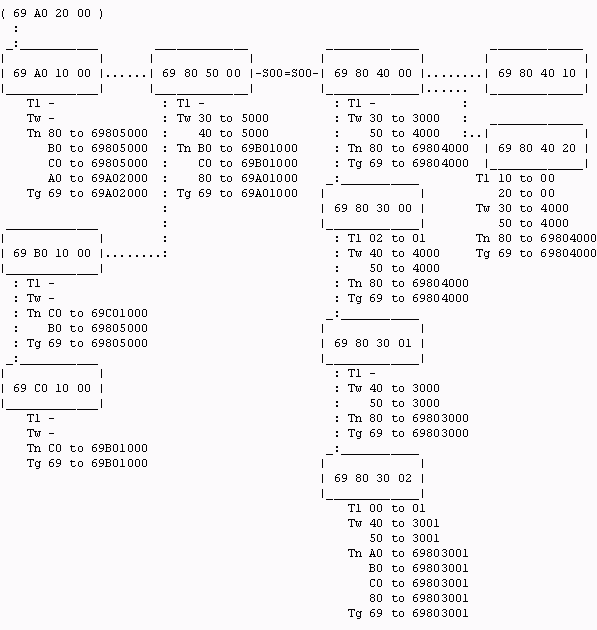More complicated network and the routing tables.
The network is made up of ten nodes which differ in addresses in
terms of wide and net. The node 69805000 and 69804000 are connected by a serial link.
The node 69A01000 is
connected to other networks through node 69A02000 where routing continues.
It is good to remember the basic principle – each node seeks for the next hop according to the destination address, which is always contained in the packet. The node which receives the packet processes the packet in similar fashion. This process continues until the packet arrives at the destination.

Comments on the contents of the routing tables:
The nodes
69804010and69804020are contained in common CU. The necessary tables are almost identical – the only difference being in the local tables where node69804010needs the item20to00and node69804020needs the item10to00. Both nodes use the common set of tables in(N)ode (e)dit.The node
69803002contains all net address, which appear in the network in it’s net tables. All these net addresses are pointed to node69803001, so it is possible to use the default item80to69803001, as was explained in the article Routing 2. The fact is used in the net and global tables of all other nodes.The node
69A01000has it’s default item in net table asA0to69A02000. i.e it’s default route in net table is pointed to69A02000, which connects our network to other networks. This is the reason the table contain explicit written net addresses which appear in our network even though they are all directed to a common node.At the wide table level, the default route option is not possible. This is why all wide table items which occur in the common net are written here. Similar reason is valid at the local table level as well, but this occur only rarely in our example.